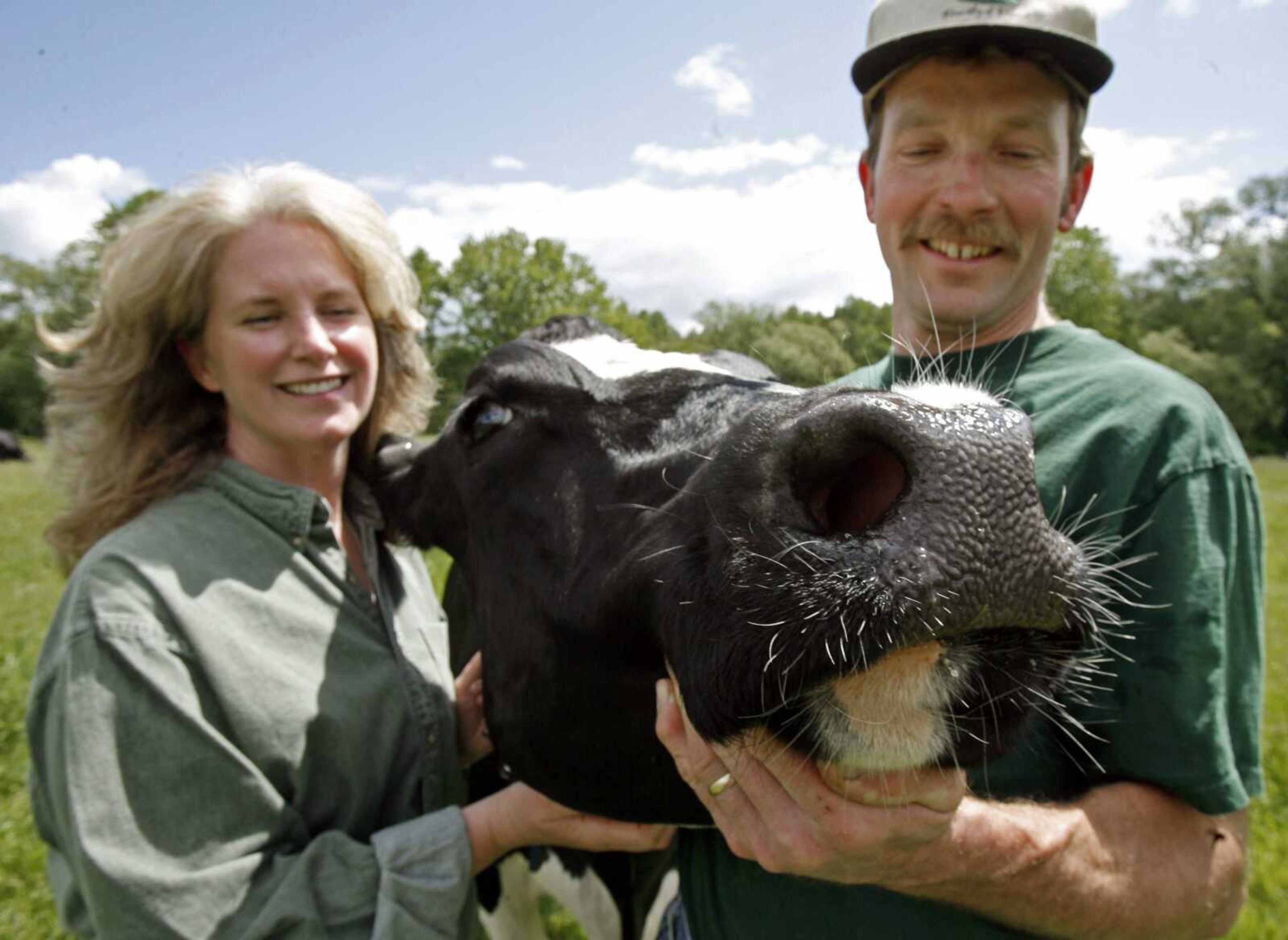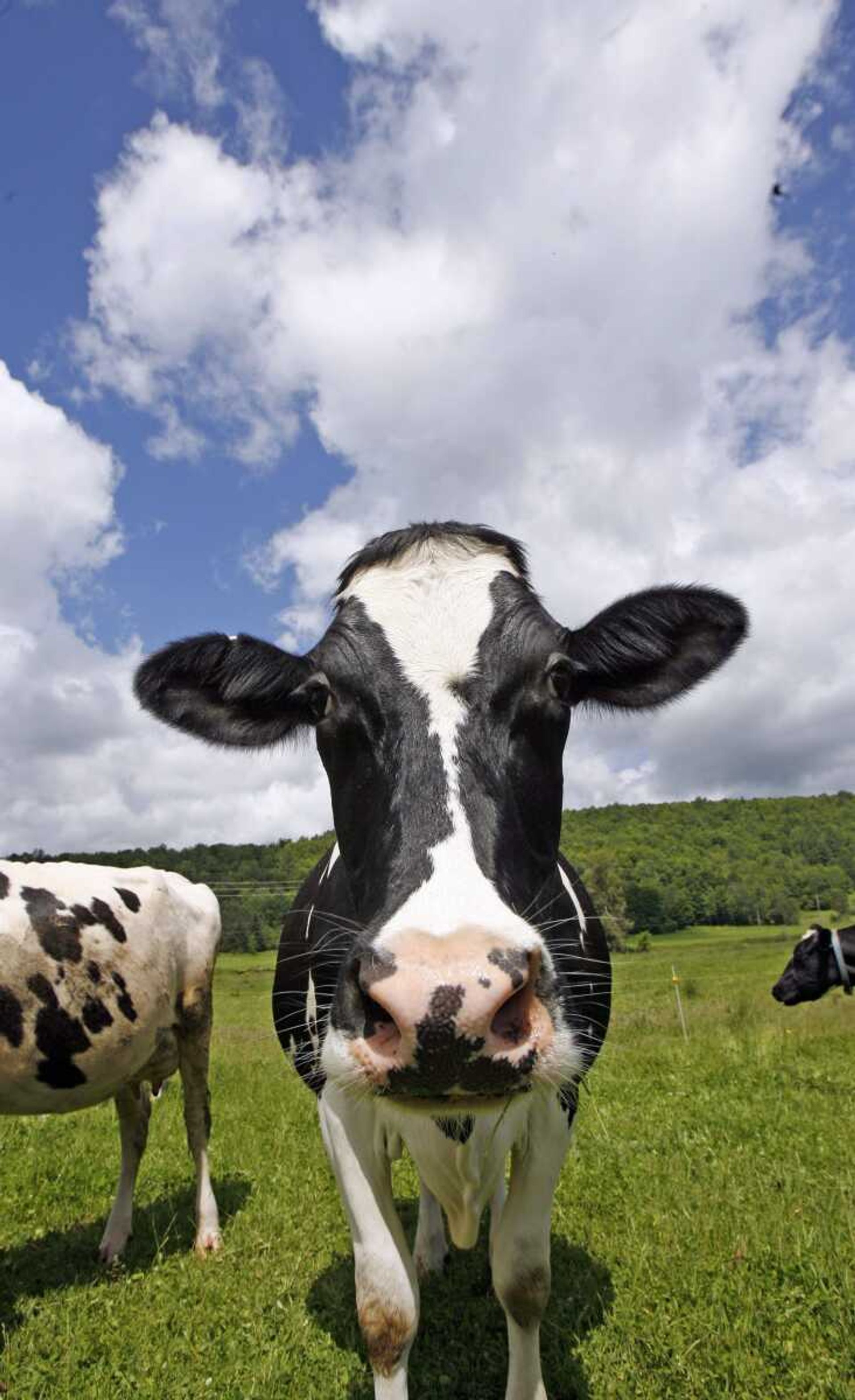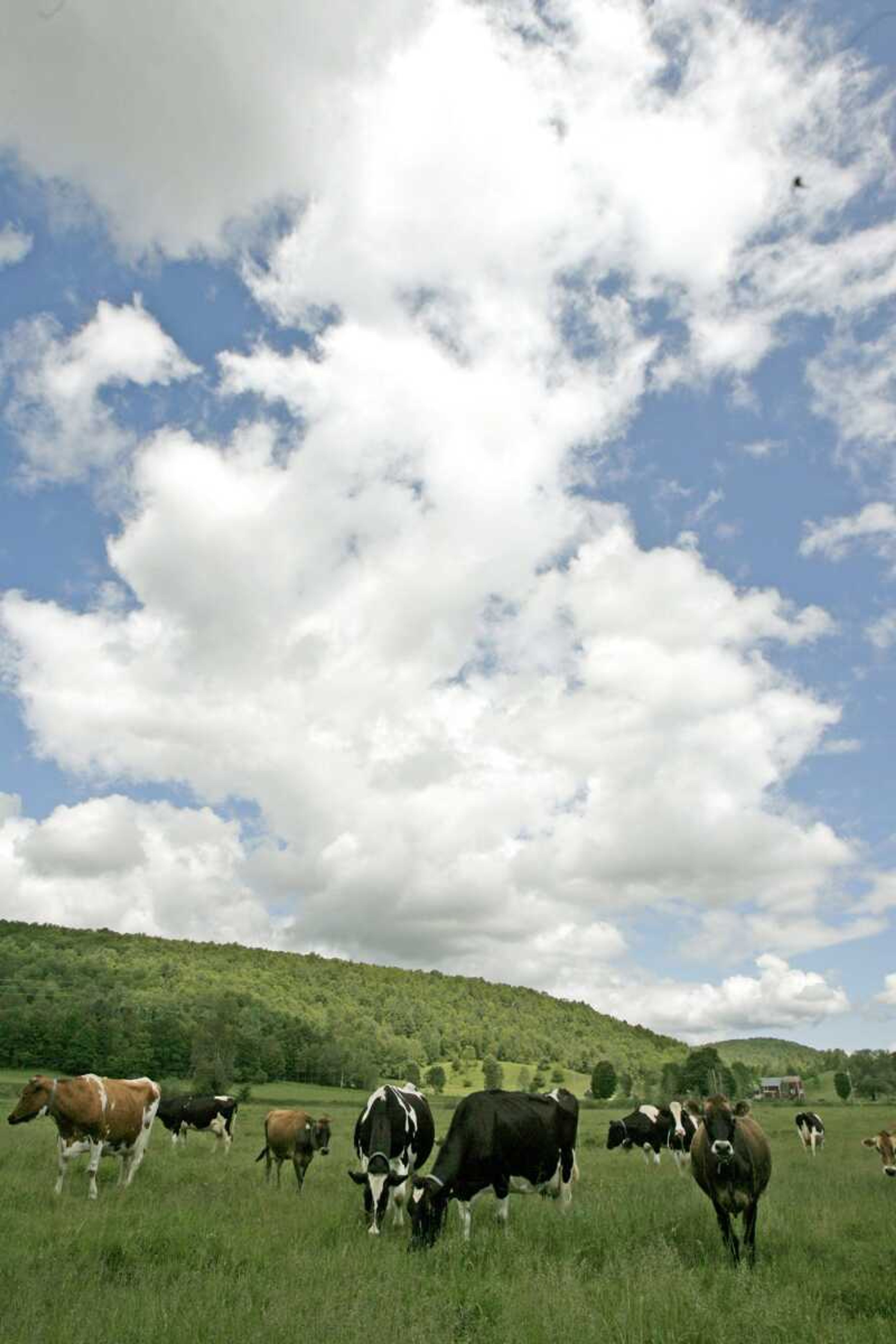COVENTRY, Vt. -- Vermont dairy farmers Tim Maikshilo and Kristen Dellert, mindful of shrinking their carbon footprint, have changed their cows' diet to reduce the amount of gas the animals burp -- dairy cows' contribution to global warming.
Coventry Valley Farm is one of 15 Vermont farms working with Stonyfield Farm Inc., whose yogurt is made with their organic milk, to reduce the cows' intestinal methane by feeding them flaxseed, alfalfa and grasses high in Omega-3 fatty acids. The gas cows belch is the dairy industry's biggest greenhouse gas contributor, research shows, most of it emitted from the front and not the back end of the cow.
"I just figured a cow was a cow and they were going to do whatever they were going to do in terms of cow things for gas," Dellert said. "It was pretty shocking to me that just being organic wasn't enough, actually. I really thought that here we're organic, we're doing what we need to do for the planet, we're doing the stuff for the soil, and I really thought that was enough."
She learned it wasn't. The dairy industry contributes about 2 percent to the country's total greenhouse gas production, said Rick Naczi, a vice president at Dairy Management Inc., which funds research and promotes dairy products. Most of it comes from the cow.
To satisfy consumers' demands for sustainable production, the Innovation Center for U.S. Dairy in Rosemont, Ill., is looking at everything from growing feed crops to trucking milk to reduce the industry's greenhouse gas emissions by 25 percent by 2020. That would be the equivalent of removing about 1.25 million cars from U.S. roads every year, said Naczi, who manages the program.

One way is by feeding cows alfalfa, flax and grasses, all high in Omega 3s, instead of corn or soy, said Nancy Hirschberg, head of Stonyfield's Greener Cow Project. The feed rebalances the cows' rumen, the first stomach of ruminants, and cuts down on gas, she said. Another way is to change the bacteria in a cow's rumen, Naczi said.
When Stonyfield first analyzed its contribution to global warming in the late 1990s, the company thought its factory in Londonderry, N.H., produced the most greenhouse gases.
"And when we got the report and our No. 1 impact on climate change was the milk production, we were completely stunned," she said.
A study showed that the single biggest source was the cow's enteric emissions: gas.
The company funded energy audits on farms and research on small manure digesters so farmers could produce energy from methane gas.

But Hirschberg said she had no idea what to do about enteric emissions. Then she learned what Group Danone of France, majority owner of Stonyfield and best known in the U.S. for its Dannon products, was doing about its methane.
By feeding their cows alfalfa, flax and grasses, they were cutting down on the gas passed.
The milk is tested at a lab at the University of Vermont to determine its fat content, a process patented by French nutrition company Valorex SAS, through which the enteric emissions are calculated.
Since January, Coventry Valley Farm has reduced its cows' belches by 13 percent. At another farm, they've gone down 18 percent.
Maikshilo and Dellert have also noticed a difference in Hester, Rosebud, Pristine and their other cows. The coats of the black and white Holsteins and brown Jerseys are shinier and they've had fewer foot problems and no stomach ailments, they say.
So far, it hasn't cost them any more for their custom-made grain, which the cows only get in the winter. Now they're out grazing on grass in the pasture, getting as many Omega 3s. And the farm's vet bills have gone down.
It's a win-win for farmers, said Naczi.
"It's just the right thing to do," he said.
Connect with the Southeast Missourian Newsroom:
For corrections to this story or other insights for the editor, click here. To submit a letter to the editor, click here. To learn about the Southeast Missourian’s AI Policy, click here.







